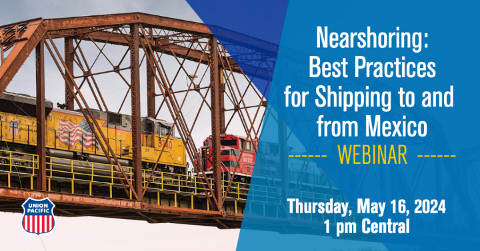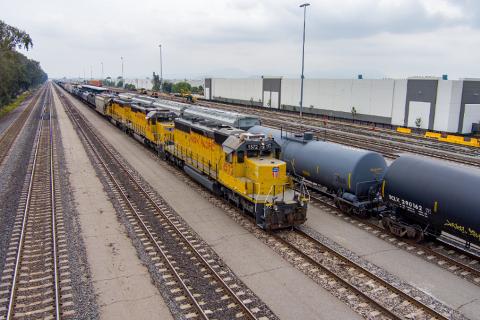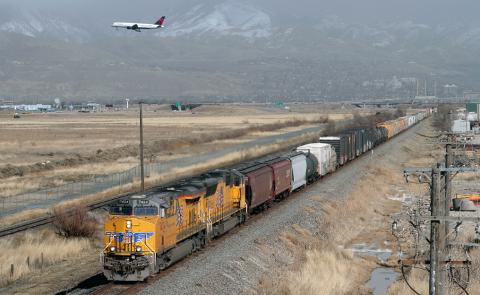Thanks to Mexico Energy Reform, the Mexico energy market is now open to private competition. That means more U.S. companies have access to new markets and a greater need to ship LPG and petroleum products to Mexico. When they do, rail offers a cost effective, safe and sustainable way to ship. What do you need to know about shipping energy products by rail? Shipping across the border can be complex, but the following answers to the most frequently asked questions can help simplify the path forward.
What’s the difference between shipping within the U.S. and shipping across the border to Mexico

Shipping products to Mexico is usually a little more complicated than shipping within the U.S. That’s because there are additional steps shippers must take to ship across the border, like obtaining a commodity permit, providing a commercial invoice and paying customs duties. Fortunately, companies called freight forwarders will work with Mexican brokers to ensure you have the proper paperwork and have met all requirements to safely, accurately and legally ship into Mexico.
When shipping by rail to Mexico, you’ll want to ensure to check these boxes:
- Obtain a commodity permit (if necessary)
- Provide a complete and accurate bill of lading (the information you provide to the railroad about your shipment)
- Provide a commercial invoice to both the freight forwarder and Mexican broker
- Pay all duties
If I want to ship my product by rail across the border into Mexico, who do I work with?
Start by contacting a Class I railroad. Railroad employees are experts at helping customers work through the things you’ll need to successfully ship to Mexico by rail, including:
- The type of rail car you’ll need
- What customs paperwork is required
- Getting a freight quote
You don’t have to tackle shipping energy products to Mexico alone. For example, Union Pacific has both U.S. and bilingual Mexico Energy Reform teams dedicated to helping customers capitalize on Mexico Energy Reform opportunities.
Union Pacific also has an International Customer Care and Support team and a specialized Mexico sales team that work closely with current and potential customers to help set up shipments traveling to and from Mexico. With expertise in international freight handling, border processes and the Mexico rail systems, these teams are positioned to help customers succeed.
What type of rail car do I need to ship energy products?

LPG and petroleum products ship in tank cars. Tank cars are usually “privately owned,” meaning they are owned or leased by the shipper rather than being provided by the railroad. Shippers can work with leasing companies to obtain the equipment needed to ship energy products by rail. Some of these companies include Greenbrier, CIT, and UTLX. Other private owners are sometimes open to leasing their cars, too.
What are the access points to cross the border?
Rail shipments cross the border into Mexico in six places: Calexico, California; Nogales, Arizona; and El Paso, Eagle Pass, Laredo and Brownsville, Texas. While each Class I railroad operates over its own set of crossings, Union Pacific is the only one with access to all six border crossings. These access points are commonly referred to as “gateways.”
Which gateway should I use?
The gateway you use will depend on the shipment’s destination in Mexico and which Mexican railroad delivers to that destination.
A member of the Union Pacific Mexico Energy Reform team can help you identify the most efficient route based on your origin and destination.
Which railroads operate in Mexico?

Mexico has two major railroads: Ferromex (FXE) and Kansas City Southern de Mexico (KCSM). Mexico also has smaller rail carriers who interchange with these larger railroads to deliver products to their final destination. An interchange is essentially a hand off of the rail shipment between the railroads and happens based on the rail car's waybill and pre-established agreements between carriers. This process is seamless to the customer.
How do I connect with the right Mexican railroad?
When you work with Union Pacific, our Mexico Energy Reform team can help connect you with the appropriate Mexican railroad as needed. Other Class I railroads may be able to offer similar assistance.
Who do I work with at the border?
At the border, you will work with your U.S. freight forwarder and Mexican broker.
If you have a question about a delay or other customer service issue, rail carriers can often answer these types of questions. At Union Pacific, we make it a priority to quickly manage and resolve customer concerns at the border, which is why we have a robust bilingual International Customer Care and Support team to manage all cross-border activities in and out of Mexico to keep shipments moving.
What paperwork is needed to ship my product across the border?
Cross-border shipments require specific clearance documents; a U.S. freight forwarder is responsible for gathering and sending these documents. On the rail side of things, all shipments to Mexico are billed from origin to final destination in Mexico and the railroad’s waybill (the form that includes all of the shipment’s details) will list both the U.S. freight forwarder and the Mexican customs broker to ensure that the shipment reaches its destination in a timely manner.
How do I keep my shipment safe when crossing the border?
Making sure your shipment is properly secured, the waybill is correct, and customs paperwork is processed in a timely manner are the most important steps to take to ensure your shipment arrives as planned.
Railroads also do their part to keep shipments safe. Each railroad has its own set of procedures to keep the border process safe and secure, and Union Pacific has a robust process in place to provide safe and secure transportation.
Mexican railroads also have their own security strategies to keep rail shipments safe, including strategic relationships with Mexican authorities and physical security like fencing and CCTV in rail yards.
Learn More
To learn more about Mexico Energy Reform and how Union Pacific can help you take advantage of new business opportunities in Mexico, visit the Union Pacific get in touch. We’d be happy to connect you with an expert.
Related Articles
- How to Access the Mexico LPG Market
- What Is Mexico Energy Reform?
- How Do Railroads Keep Cross-Border Shipments Safe?
- Are Mexico's Hours of Service Regulations Affecting Your Supply Chain?
- Quiz: Can Your Product Ship by Rail?
- Rail 101 FAQs
- Rail Car Types Defined
- The Top Railroad Terms and Their Definitions: Beginner’s Edition









